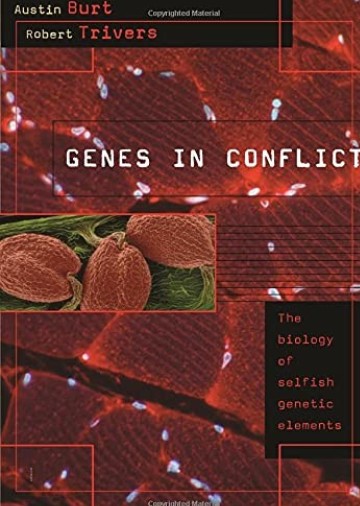Summary
My primary research interests are in developing novel genetic approaches to control disease vectors and other pest species, with a specific focus on the mosquitoes that transmit malaria in sub-Saharan Africa.
Hundreds of thousands of people still die every year due to malaria, and new interventions are needed. Recent advances in molecular biology have opened up the possibility of completely new approaches based on genetic modification of the mosquitoes that transmit malaria. The most efficient such approaches use gene drive — a natural process by which some genes are preferential transmitted from one generation to the next — but I am also interested in more localisable interventions. In addition to their potential role in malaria control and elimination, these novel genetic strategies may be useful for controlling other vector-borne diseases, harmful invasive species, and other pests.
Good models need good parameter values, and I am also interested in extracting relevant estimates from genome sequence data for Anopheles gambiae. This research typically involves developing new methods.
I also collaborate with Prof Andrea Crisanti (Imperial), whose lab is actually making and assessing gene drive constructs in An. gambiae mosquitoes.
Finally, I am Principal Investigator for Target Malaria, a not-for-profit research consortium within which this research is occurring, and which also includes much other activity focussed on developing and testing gene drive mosquitoes for malaria control in sub-Saharan Africa (www.targetmalaria.org).
Strategic modelling of genetic biocontrol
We are interested in how sequence-specific nucleases can be used in different configurations (target site, insertion site, promoter, etc) as the basis for different genetic biocontrol strategies. Early work focussed on the most powerful and efficient forms of gene drive; more recent work has focussed on applications requiring some level of self-limitation or localisation (e.g., when one wants to control a species in one location but not in another).
Willis K, Burt A, 2021, Double drives and private alleles for localised population genetic control, PLoS Genetics, 17
Burt A, Deredec A, 2018, Self-limiting population genetic control with sex-linked genome editors, Proc. Roy. Soc. Lond B, 285:1-9
Beaghton A, Hammond A, Nolan T, , 2017, Requirements for driving antipathogen effector genes into populations of disease vectors by homing, Genetics, 205:1587-96
Beaghton A, Beaghton PJ, Burt A, 2016, Gene drive through a landscape: reaction–diffusion models of population suppression and elimination by a sex ratio distorter, Theor. Pop. Biol., 108:51-69
Burt A, 2003, Site-specific selfish genes as tools for the control and genetic engineering of natural populations, Proc. Roy. Soc. Lond B, 270:921-8
Modelling applications to malaria control
The specific use case that we are primarily focussed on is the control of mosquitoes that transmit malaria. Malaria continues to impose an enormous burden, and new interventions are much needed.
North AR, Burt A, Godfray HCJ, 2020, Modelling the suppression of a malaria vector using a CRISPR-Cas9 gene drive to reduce female fertility, BMC Biology, 18
North AR, Burt A, Godfray HCJ, 2019, Modelling the potential of genetic control of malaria mosquitoes at national scale, BMC Biology, 17
Eckhoff PA, Wenger EA, Godfray HC, ., 2017, Impact of mosquito gene drive on malaria elimination in a computational model with explicit spatial and temporal dynamics, Proc. Nat. Acad. Sci. USA, 114:E255-64
Deredec A, Godfray HCJ, Burt A, 2011, Requirements for effective malaria control with homing endonuclease genes, Proc. Nat. Acad. Sci. USA, 108:E874-80
Anopheles population genetics
We are interrested in using genomic data to estimate demographic parameters in Anopheles gambiae mosquitoes (e.g., population size and movement patterns). These parameter values can then be used to model the impact of a particular genetic biocontrol strategy
Hui T-YJ, Brenas JH, Burt A, 2021, Contemporary N-e estimation using temporally spaced data with linked loci, Mol. Ecol. Res, 21:2221-30
Khatri BS, Burt A, 2019, Robust estimation of recent effective population size from number of independent origins in soft sweeps, Mol. Biol. Evol., 36:2040-52
Miles A, Harding NJ, Botta G, , 2017, Genetic diversity of the African malaria vector Anopheles gambiae, Nature, 552:96-100
O'Loughlin SM, Magesa SM, Mbogo C, , 2016, Genomic signatures of population decline in the malaria mosquito Anopheles gambiae, Malaria J., Vol: 15
Developing gene drives in Anopheles gambiae
I collaborate with Prof Andrea Crisanti (Imperial), whose lab is actually making and assessing gene drive constructs in An. gambiae mosquitoes.
Kyrou K, Hammond AM, Galizi R, , 2018, A CRISPR-Cas9 gene drive targeting doublesex causes complete population suppression in caged Anopheles gambiae mosquitoes, Nat. Biotech., 36:1062-66
Galizi R, Doyle LA, Menichelli M, , 2014, A synthetic sex ratio distortion system for the control of the human malaria mosquito, Nat. Comm., 5
Windbichler N, Menichelli M, Papathanos PA, , 2011, A synthetic homing endonuclease-based gene drive system in the human malaria mosquito, Nature, 473:212-5
Book
Genes in Conflict: The Biology of Selfish Genetic Elements
Austin Burt and Robert Trivers

Detailed contents [PDF format]
Information @ Harvard University Press website
Previous lives
Previously I have worked on a diverse array of topics, including the evolution of genetic systems, the molecular ecology of yeasts and other fungi, comparative methods, and the molecular evolution of homing endonuclease genes, other genomic parasites, and a transmissible cancer. See the next page for the complete list of publications.
What follows is a computer-generated list of my most recent publications.
Publications
Journals
Mwima R, Hui T-YJ, Kayondo JK, et al., 2024, The population genetics of partial diapause, with applications to the aestivating malaria mosquito Anopheles coluzzii., Mol Ecol Resour, Vol:24
Mwima R, Hui T-YJ, Nanteza A, et al., 2023, Potential persistence mechanisms of the major Anopheles gambiae species complex malaria vectors in sub-Saharan Africa: a narrative review., Malar J, Vol:22
Geci R, Willis K, Burt A, 2022, Gene drive designs for efficient and localisable population suppression using Y-linked editors, Plos Genetics, Vol:18, ISSN:1553-7404
Khatri BS, Burt A, 2022, A theory of resistance to multiplexed gene drive demonstrates the significant role of weakly deleterious natural genetic variation, Proceedings of the National Academy of Sciences of the United States of America, Vol:119, ISSN:0027-8424
Geci R, Willis K, Burt A, 2022, Gene drive designs for efficient and localisable population suppression using Y-linked editors

